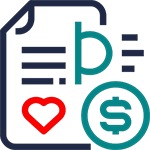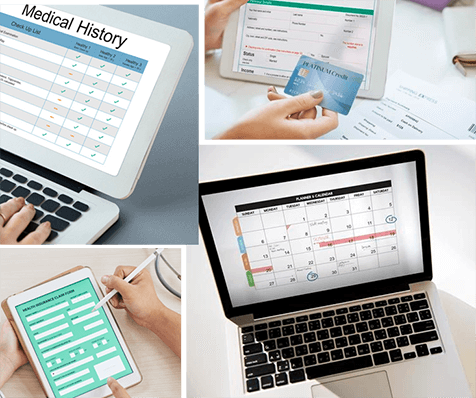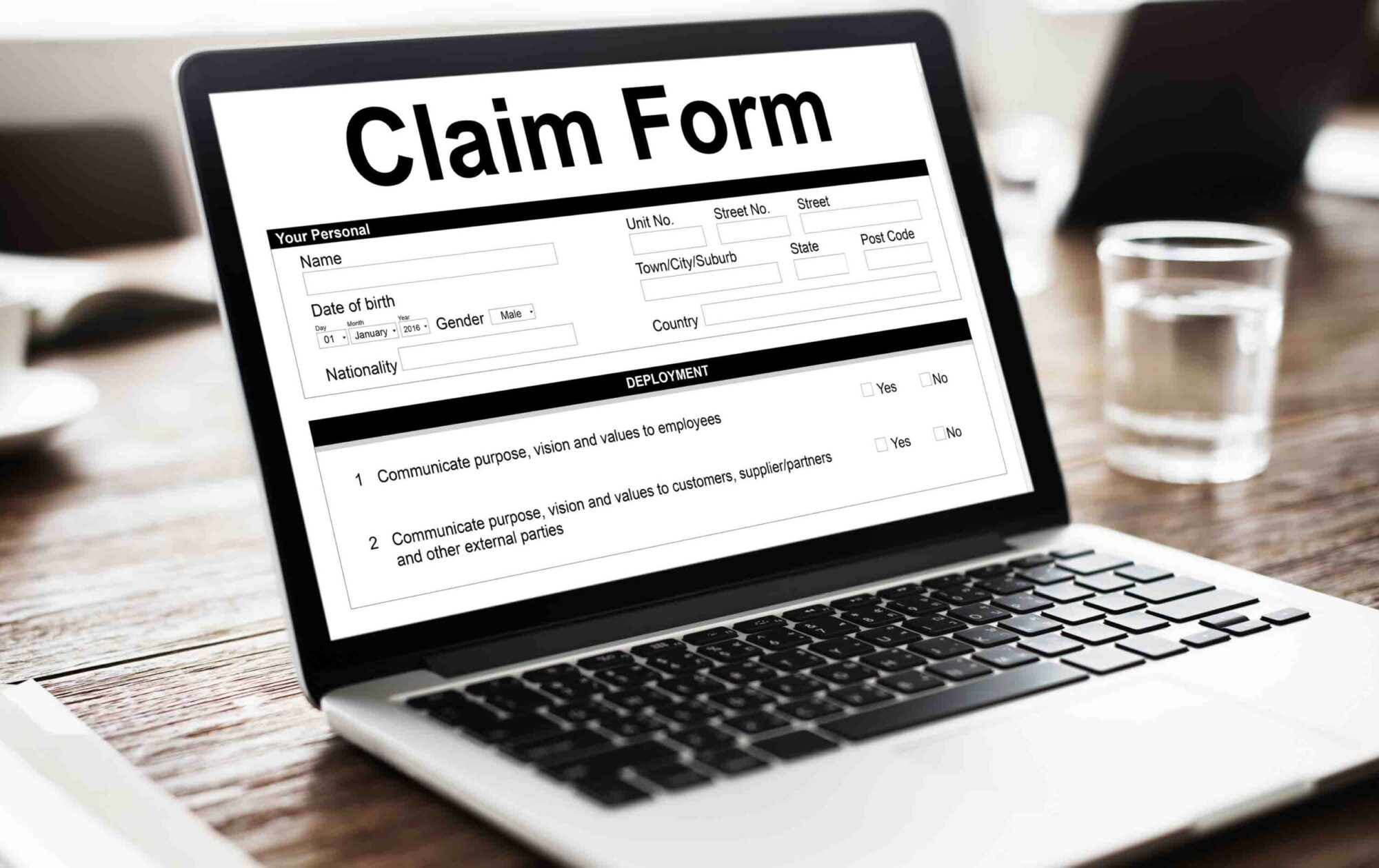The Medical billing insurance claims process begins when a health care provider gives the patient treatment and sends the invoice of the bill to an insurance carrier for services rendered. It is then up to the discretion of the insurance payer to reimburse the amount after careful evaluation of several factors. Every procedure is assigned a specific code that differentiates various medical services. ICD (International Classification of Diseases) codes determines diagnosis while CPT (Current Procedural Terminology) relates to the nature of a specific treatment. The medical claims process can be summarized as the act of verifying the claim requests as valid, authentic and warranted.

It is an alarming fact that vital health services remain inaccessible to more than half of the world’s population which is estimated to be 3.5 billion individuals according to a survey by the UN. Presently medical billing expenditures force 100 million people to survive on $1.90 or less a day.
The complex and detail-oriented health insurance industry remains to be a daunting challenge for most providers. The use of manual systems is now outdated which heightens the need for medical claims processing software. It simultaneously integrates electronic health records, patient portals, medical billing reports, revenue cycle management processes and automates clinical workflows.
An Overview of Medical Claims from Medical Billing
The medical billing process is paramount in regulating revenue cycle management. This can vary from several days to several months. It is dependent upon the continuous communication between the health care provider and the insurance company. The lifecycle of an insurance claim pertains to the process flow from the point of claim submission through the provider until reimbursement by the insurance carrier. It starts with submitting a claim, processing a claim, following through on adjudication policies and finally resulting in either payment or denial of the claim.
The role of a claims adjuster is to process the claims for final reimbursement as per the directives of an insurance company. Denied or rejected claims are sent back to providers in the shape of EOBs (Explanation of Benefits) or ERA (Electronic Remittance Advice). It contains the information about paid or denied claims and the final billed amount. An ERA is a form of electronic communication also known as 835, is the electronic transaction that has claims payment information in a HIPAA approved format.
Rejected Claims are not accepted by insurances due to errors or non-coverage issues. Whereas denied claims are processed and can be appealed after making necessary corrections. A corrected claim may be submitted for fully or partially paid claims. A denied claim is required to be submitted as a new claim. It is the responsibility of a medical coder to assign the right ICD-10, CPT codes for each medical procedure. Correct coding practices affect the status of a medical claim. The medical billers translate codes into a financial report and medical coders assign codes to the medical procedures. The key players in the medical billing and coding industry are health care providers, insurance carriers and insurance policyholders.
Medical Claims Processing Software
There are primarily two ways to file a claim, electronically or manually. With new technological advancements the paper filing mechanism for claims processing is now obsolete. To expedite the tedious claim process Medical claims processing software is the one-stop solution for maximum A/R collections and efficient Revenue Cycle Management. Many medical billing companies offer discounted medical billing and claims services which are highly favorable solutions for providers looking to outsource their medical billing. Their medical billing specialists can assist you with all your billing and coding needs.
The process of filing a claim is heavily dependent on several protocols. A claim can be filed electronically through the use of an EHR software or via paper format and manual input. Effective July 1, 2016 medical providers are required to submit all claims electronically. With the exception of very small practices with less than ten employees to process claims manually. There are two types of claim forms the CMS -1500 and the UB-04.
With an integrated and customizable EHR software tool you can streamline office workflow. It will enhance the productivity of your practice, give you peace of mind, and allow you to focus on your patients’ healthcare. Medical Claims Management is an all-inclusive life insurance claims system designed to provide claims management and processing support for a variety of claim types in a single system.
The need to outsource medical billing and coding to a medical claim processing service has perpetuated greatly as providers are seeking to cut down on their staffing expenses. It also eliminates heavy payroll tax issues, billing errors, timely and accurate submission of claims, lower claims rejections, and consistent follow-ups. Thus leading to faster recovery of A/R and efficient medical claims management acquainted with all the latest trends and regulations. As the claims process is lengthy and requires great precision opting for a credible medical claims management service is always a wise decision. It helps a practice boosts its revenue and maximizes clean claims submissions
The Pivotal Need for a Clearing House in Claims Submission
The role of clearinghouses in claims submission is to serve as a middle man between insurance payers and doctors. It serves to be a centralized focal point where claims are sent to be processed and forwarded to multiple insurance carriers. The primary purpose of a clearinghouse is scrubbing claimsfor accuracy, to arrange them properly, ensuring HIPAA compliance and sending them back to the designated parties involved. They also provide reports with the progress of each claim. A clearing house serves as a third party that is deals with large amounts of insurance claims which need to be sent to various insurance providers with stringent policies of their own. It acts as a dual check system for cleaner error free claims. It is also important to accommodate the insurance providers’ practice management software for claims transmissions.
Types of Insurance Coverage
Most Americans receive insurance coverage benefits through their employer. These include a network of doctors, hospitals and health care providers. There are mainly categorized as HMO, PPO and Point of Service Plans. The expertise of reliable medical claims and medical billing service providers for private and government-insured patients is imperative to understand the key differences in each coverage.
HMO (Health Maintenance Organization) plans allow patients to see a provider under insurance provided network in which they are liable to pay for out of pocket expenses.
In PPO (Preferred Provider Organization), plans providers agree to provide care to the plan members at a certain rate within the prescribed network by providers.
Point-of-service Plans: Point-of-service plans form a fusion between PPOs and HMOs.
Medicaid and Medicare plans which are government-funded plans for the elderly.
Green Sense billing is proud to work for and serve many healthcare providers in various medical fields. Our top medical billing services are both intrinsic and revolutionary. We cater to all your medical billing and coding needs with our exclusive, specialty-based Practice Management Software and premier EHR software. We will maximize your revenue and keep your practice running smoothly. The medical claims process can be laborious and multifaceted. Familiarity with the latest industry trends, adjudication processes and faster access to electronic claims submission solutions is integral for the success of health care providers and insurance carriers today.



















